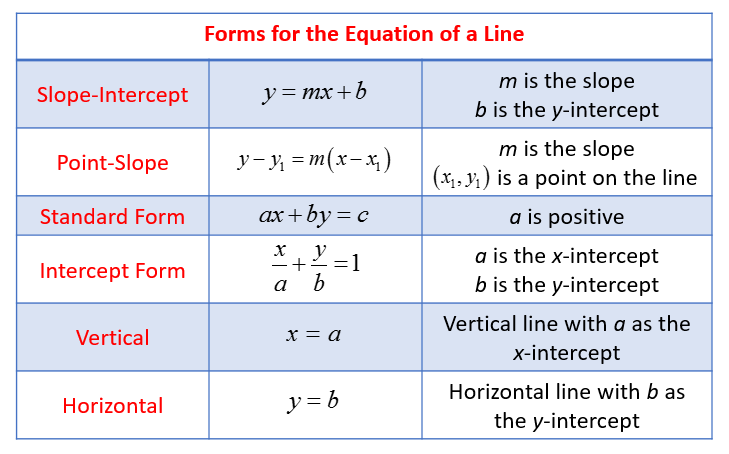Intercepts and the Cover-Up Method
Key Questions
-
Answer:
#color(blue)("Horizontal line " x = a# #color(purple)("Vertical line " y = b# Explanation:

Refer table above.
#"Equation of a line in" color(red)("Intercept Form") "is given by"# #x / a + y / b = 1, " where a in x-intercept and b the y-intercept"# For a horizontal line, y = 0 or y/b = 0 and the equation becomes,
#x / a = 1 " or " x = a# Similarly, for a vertical line, x = 0 or x / a = 0 and the equation becomes,
#y / b = 1 " or " y = b# -
I suppose that "cover-up" is a friendlier term for "setting a variable equal to zero," so if you are looking for the
#x# -intercept of a line, then set#y# equal to zero, and for#y# -intercept, set#x# -equal to zero.
Example
Let us find the
#x,y# -intercepts of the line#2x+3y=12# .To find the
#x# -intercept, set#y=0# .#=> 2x+3(0)=12 => 2x=12 => x=6# So, the
#x# -intercept is#6# .To find the
#y# -intercept, set#x=0# .#=> 2(0)+3y=12 => 3y=12 => y=4# So, the
#y# -intercept is#4# .
I hope that this was helpful.
Questions
Graphs of Linear Equations and Functions
-
Graphs in the Coordinate Plane
-
Graphs of Linear Equations
-
Horizontal and Vertical Line Graphs
-
Applications of Linear Graphs
-
Intercepts by Substitution
-
Intercepts and the Cover-Up Method
-
Slope
-
Rates of Change
-
Slope-Intercept Form
-
Graphs Using Slope-Intercept Form
-
Direct Variation
-
Applications Using Direct Variation
-
Function Notation and Linear Functions
-
Graphs of Linear Functions
-
Problem Solving with Linear Graphs